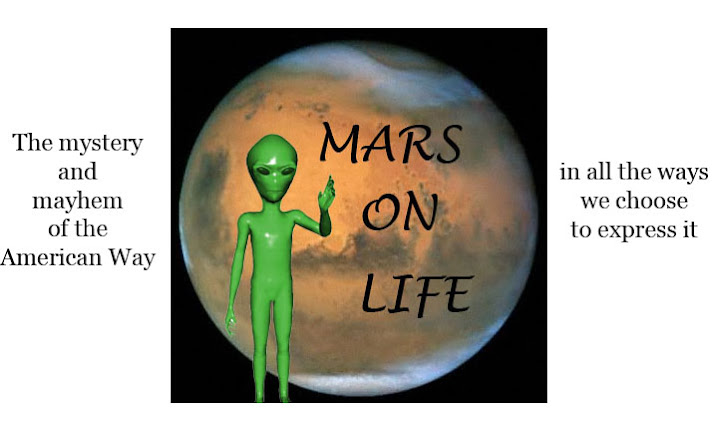
In the spring of 1937, Wallis Simpson posed for Vogue in a Schiaparelli evening gown that had a lobster printed on its skirt. Salvador Dalí designed the print, which also featured sprigs of parsley. The Vogue spread was intended to introduce readers to Mrs. Simpson, who in July of that year would marry Edward VIII, Duke of Windsor and abdicated King of England. Cecil Beaton's lens captured Mrs. Simpson wearing a softened expression that was the antithesis of what would come to be called "hard chic" and for which the Duchess of Windsor would be famous.
Mrs. Simpson was an important client for Schiaparelli, whose white organdy gown appeared superficially naive and whimsical. Organdy was the fabric of debutantes, the fabric of virgins. The gown had a modest neckline, red waistband, and full skirt. The lobster motif must have seemed fanciful, yet by wearing the gown Mrs. Simpson was telegraphing her ignorance of the artist's message. For Dalí, the lobster was full of frank sexual connotation and metaphor. Mrs. Simpson was an ardent Schiaparelli fan and history has not recorded who, if anyone, suggested she wear the dress in the layout. Interestingly, it also suggests a naïveté and lack of cultural awareness on the part of Vogue's editorial staff. Surely Schiaparelli was aware of the ramifications, and it is likely that photographer Cecil Beaton was as well.
Dalí liked the idea of the jolie laide, saying, "In the elegant woman, there is always a studied compromise between her ugliness, which must be moderate, and her beauty which must be "evident," but simply evident without going beyond this exact measure." Such a presentation resulted in a sharp, aggressive profile and seems to epitomize Mrs. Simpson.
Dalí had been using lobsters in his work for several years prior, most famously in the 1936 Téléphone-Homard. There, a plaster lobster replaced the ear piece. The telephone was a prime example of the symbolism of the Surrealist object. In their juxtaposed incongruity, Dalí felt, such objects were freed from "formal preoccupation" and "depend(ed) only on the individual's amorous imagination." Also, as work of art the phone had no social status. It was not a Monet or Rembrandt, artists who work conveyed the wealth and supposed taste of the buyer. Quite the opposite; the absurdity of the phone telegraphed an enlightened, anti-bourgeois philosophy.
It also carried a message of Freudian sexuality. Dalí equated lobsters with the vagina dentata.
The expanded definition of lobster as symbol of vagina dentata would appear two years later, at the 1939 World's Fair in Flushing Meadows. The fair, billed as "Building the World of Tomorrow," was a theoretical and technological showcase for American industrial design and its consequent power. Built on land repurposed from a garbage dump, the fair was intended to demonstrate American determinism as it moved away from the bleak years of the Depression and towards a future that would soon be clouded by war. At the entrance, the Trylon and Perisphere invited visitors to enjoy pride in modernization. The phallic Trylon soared skywards while the orb-shaped, maternal Perisphere suggested totality. That the fair relied heavily on the babbittry of the citizen was contrasted by a pavilion parked away in the Amusement Zone.
The pavilion proposed by art dealer Julien Levy was to contain a gallery of Surrealist artwork. When Levy and architect Ian Woodner were unable to obtain financing, they approached Dalí, then the most well-known proponent of the movement. With Dalí's name attached, the project went forward, becoming The Dream of Venus and a furthering of Dalí's Freudian interpretation of the Surrealist code. As conceived by Dalí, the pavilion was a pile of biomorphic deformities: a fish head for a ticket booth, disembodied female legs as a portal. Inside, a topless Venus "slept" on satin sheets while her dream was enacted by models swimming in a water tank.
 Horst photograph of a costume design for the Dream of Venus; body paint by Dali
Horst photograph of a costume design for the Dream of Venus; body paint by DaliMuch of the modern European art community felt that nefarious bourgeois plotting caused World War I. By nationality and original aesthetic part of that group, Dali's taking part in a bourgeois fair that advanced America as a mechanized superpower and provider of a synthetic good life seems odd until one remembers the ultra-conservatism that caused Dalí's 1939 expulsion from the Surrealist circle. America was over two years away from declaring war on Japan and was maintaining a stance of isolationism even as it intended for the fair to be international. At the time the Pavilion was conceived, Dalí was living in New York, enjoying a capitalist lifestyle, and was no longer philosophically connected to the Surrealist movement. The Pavilion was a monument of separation; it reduced Surrealism to fantasy art alone.
Would Mrs. Simpson have posed in the gown had she been aware of its connotations? The simplicity of the fabric and design belied the sexual complexity of the concept. A duality of whimsy and repulsion, along with the disruption of reality and literal significance would have been completely lost on her as she nonchalantly posed in the garden.
What appeared as a nonsense motif had its roots in a Dada cynicism that questioned the smugness of the social class of which Mrs. Simpson was a member. On the eve of her wedding to the Duke, she posed in a dress that was loaded with social and sexual implication.
Schiaparelli had a long affiliation with the Surrealists. The fashion medium was ideal for incorporating the Surrealist object. The designer made hats that looked like pork chops and gloves onto which red snakeskin nails were affixed. For the mainstream client, the lobster gown was refashioned into a summery apron dress, appearing that way in the July 1937 Vogue. As ready-to-wear, the rephrased dress lost its charge and the further addition of parsley makes the dress as carefree as a clambake.

History has not been kind to the Duchess of Windsor; she is remembered as a conniving American divorcée who interfered with the royal line of succession. Hers may have been a café sophistication and not an intellectual one. How she missed the context of the original design seems the oversight of a past that was far naiver and more superficially trusting than the world that emerged at the end of World War 2.









13 comments:
There was a great exhibit on Surrealist design at the V&A...I think it was last year.
I haven't much knowledge of Surrealism outside the obvious cultural references (Dali, Magritte), and the French Surrealist literature I read for my class last semester. We discussed the absurd, and the whole basis of classifying what was absurd was, in fact, absurd.
To me, Surrealism feels like an inside joke, whose (tautly amusing) punchline is there for the taking, if only one strives to find it. Trouble is, it's a lot of work! And I'm lazy.
This was a really nice post. I'd never seen that dress before, though I've seen plenty of images of Simpson, and of Schiaparelli's work.
enc, there's a book about Schiaparelli that is well worth investigating: Shocking. There is some additional information on the dress and much more information on the designer and the Surrealists. Local library should have it, I'd think!
I noticed that in a retrospective of Surrealist fashion the Schiap dress was said to have the lobster climbing up the legs. You can see this is not true; the lobster is headed downwards and in opposite orientation to the photography where the lobster sits in the crotch area.
Do you remember Kate Spade's lobster bag from last summer? Again: lobster as female vessel.
I grew up in the lobster capital of the world--Prince Edward Island--and am hence far too close to lobsters to ever sport them in the name of style. If those hungry tourists I saw every summer ever thought about the psychoanalytical implications of lobsters, I suspect they'd have a bit of a sour stomach.
the most interesting thing i've read in AGES! who knew lobsters had the power to be so controversial?!
1. When I visited Montreal nine years ago you could get a McHomard from McDonalds.
2. Dali is my favourite of all the Alice artists - once I get about $10K together that book is mine.
3. I would wear a Dali lobster dress, if only to say that I had done it. And to post the pictures of course.
4. Perhaps someone should make a dress that has a banner reading, Ceci n'est pas une robe.
Thom, I remember those McHomard's! Also, in the Northeast (Mass/RI) there was a lobster salad roll at McDonald's. Both experiments failed; this is why we have clam shacks.
While I'd love to see you in the lobster dress, I certainly can't encourage it. You don't need the female experience that badly.
Miss Cavendish, Kate Spade strikes me as someone who might be unaware of the implications--she's all about whimsy, isn't she?
Imagine being the person to object to her idea, explaining the history of the Dali lobster, feeling like a perv for bringing it up, being looked at sideways in every future meeting...eventually learning to keep your mouth shut.
Brilliant...I'm with Selina I never knew lobsters were so controversial.
Mrs Simpson was a smart cookie.... pity she didn't spot this faux pas...
A fantastic post by the way!
Thomas: A McHomard... me wants...
Indeed I'm sure Kate Spade was utterly unaware of the connotations.
When I was growing up on the Island, there was a hit song by "Stompin Tom Connors" (really) called "Lester the Lobster." Just add a couple of letters to that Freudian moniker.
Where did you get that fantastic Dali quote?? It exceptionally conveys the delicate balance that must be struck by woman at all times. A universalist conception, I think not without critics, but notable none the less. Also, I really like the distinction you make between the original foregrounding of the lobster, and the Vogue 1937 version!
Oh this is bloody fascinating - great post.
So in effect, Wallace Simpson inadvertently casts herself as the monstrous feminine. Had the British monarchy been aware of this construct, they would have sent out a press release.
Post a Comment